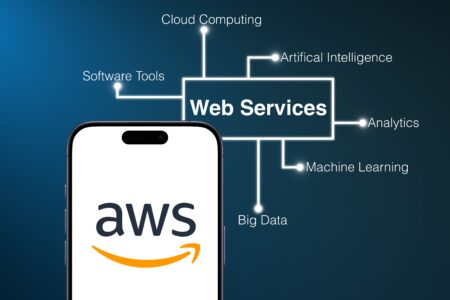With the Industry Cloud Battleground underway, I’ve been reflecting on cloud offerings and how organizations in different industries — and specifically manufacturing — can adopt them. On November 17th, the Battleground will focus on industry clouds for manufacturing. Following are four ways that I believe manufacturing organizations can benefit by moving systems and processes to the cloud, along with a few challenges that need to be considered on the path to digital transformation.
Cloud Benefits for Manufacturers
1. Future Proof the Organization
When companies implement major systems, such as Enterprise Resource Planning (ERP), the cost and time to configure and deploy the software can be substantial. Depending on the size of the company, it could take months or even years, and cost millions of dollars.
With traditional on-premises solutions, that require significant physical resources such as servers and storage. Upgrades might only come around every few years and require major implementation projects and new hardware for each one. As a result, it’s not uncommon for manufacturing companies to question the value in moving to a new version. After all, if it is still working well, why mess with it and introduce new risks, not to mention all the time and effort and cost?
The result is that a company will just get by with technology that is getting older and older. Other companies that implement a newer version of the software gain a competitive advantage through all the new features and functionality, while the company stuck in the past gets further and further behind.
As cloud-based solutions have rapidly gained traction over the last few years, it has become clear that continuing to rely on traditional on-premises solutions is not a recipe for success in today’s fast-moving market. The adoption of cloud-based solutions ensures that as the technology advances, which is currently happening at a rapid pace, and new features and functionality become available, all of these upgrades can be implemented almost seamlessly, with no requirement for a major project or outlay of capital to immediately unlock that innovation and deliver new services.
2. Flexibility
Cloud-based solutions are deployed in a scalable architecture, which means they can grow and shrink as required by the business. If more resources are needed during a certain time of year, such as the holidays, they can be expanded, and then reduced again once as demand decreases, ensuring that you only pay for what you need.
With all the uncertainty due to the COVID pandemic — including supply chain problems, employee absences, and work-from-home challenges — it is imperative that systems used by manufacturing companies provide flexibility in how and where the systems are used. Manufacturers have had to quickly make changes to the products they produce, or shift resources to different parts of the country or the world. Systems that are based in the cloud rather than on-prem at the manufacturing location are better able to handle these rapid shifts in priority or strategy.
3. Data Accessibility
Today’s cloud providers are developing interconnected ecosystems that can have a powerful impact on a manufacturing company’s ability to use data to make critical business decisions.
Manufacturing lines and the multitude of sensors and other IoT devices produce huge amounts of data. It requires sophisticated systems, with capabilities such as intelligent automation, artificial intelligence and machine learning, to manage all of that data and present it in a form that can be consumed by decision makers in real-time.
Then, if you take that a step further, quality control, supply chain management, and production performance data can all be combined with sales and marketing, finance, and industry data. And that data is made meaningful and actionable through easy-to-understand dashboards, available anywhere, anytime, on almost any device.
4. A Modular Framework
For many manufacturing companies, the first step toward cloud technologies does not start with ERP. Instead, productivity suites such as Microsoft’s Office 365 provide a launching pad for manufacturing companies to experience the benefits of cloud-based systems, without all the hurdles associated with a major ERP implementation.
Office 365, along with other applications such as Power BI and Microsoft Teams, have helped employees of manufacturing companies become accustomed to the idea of always running on the latest version, with access to new functionality multiple times per year. In addition, the software is accessible from anywhere, whether in the office, in the warehouse or plant, or working remotely from home, using a wide array of devices, including laptops and smart phones, or even anything with a web browser.
Once workers get used to using office productivity applications this way, it’s not such a big jump to see the benefits of the cloud for any department: human resources functions such as onboarding, benefits, and payroll; accounting needs like expense management, budget, and AP automation; sales and customer service functionality such as portals and EDI. And of course, I would include the areas specific to manufacturing and distribution such as warehouse management, inventory, shipping and logistics, procurement, production planning, and shop floor management.
These technological benefits translate directly into business benefits: cost savings from detecting quality issues in real-time; increased profit margins from just-in-time manufacturing that gets a product to market ahead of the competition; and employee satisfaction from focusing on value-adding work rather than repetitive tasks which can be supplemented with automation.
Challenges to Consider
In spite of the many benefits promised by cloud computing, and industry-specific cloud services, many manufacturing organizations have been hesitant to commit to cloud-based systems. There were several reasons, some of which have been resolved, though a few are still roadblocks or at least need creative solutions to work around.
Security
One of the biggest objections to moving manufacturing systems to the cloud is based on the assumption that on-premises systems can be better protected from hackers. It has long been a common belief that putting intellectual property and critical data on public servers is inherently unsafe, while on-premises servers can be more closely monitored and isolated from the world. In reviewing the latest cloud offerings from the major providers, it’s clear that security has been a top priority. There are now many trusted services provided for getting your data safely to and from the cloud. The security aspect certainly shouldn’t be ignored, but it doesn’t need to be a roadblock any longer.
Connectivity and Bandwidth
Manufacturing facilities are often located in remote areas with limited access to redundant Internet connections. While a downtown office building might have options for ensuring that a network connection to the cloud is always available, this isn’t always feasible for plants and warehouses. If there is only one Internet provider available, and that provider suffers an outage, the systems that are relying on cloud connectivity could become inoperable, which could mean shutting down production or shipping.
Furthermore, manufacturing lines have sensors that have the potential to produce millions of data points very quickly. To push all this data directly to the cloud for processing requires high bandwidth connections to the Internet, whereas if the server is located on-site, the data only passes over the local network. There have been many exciting advances in edge computing, which entail performing some of the data collection and processing close to the source of the data, such as the factory, shop floor, or warehouse. With edge computing, operations should be able to carry on in the event of an Internet disruption and data could be analyzed locally, rather than pushed through limited bandwidth.
Conclusion
The greatest thing about moving manufacturing systems to the cloud is not what you gain initially, but what it paves the way for. As the technology continues to evolve, the constantly upgraded, scalable solutions will provide new ways of enhancing your business that don’t exist today. It is important for leaders of manufacturing companies to see the possibilities of the future, and to begin by embracing frameworks that pave the way for those innovations. Cloud solutions are a critical part of those frameworks.









